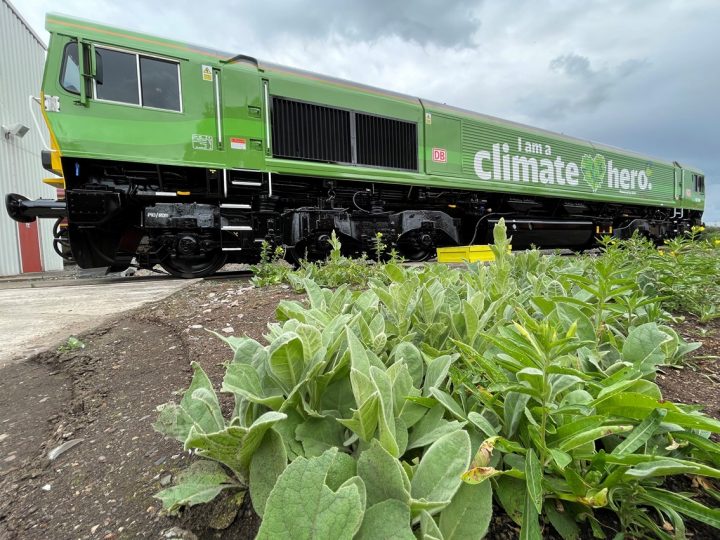Britain reveals Sustainable Rail Blueprint

The independently appointed Railway Safety and Standards Board (RSSB) has published its comprehensive vision for the future of rail sustainability. The Sustainable Rail Blueprint, an industry-wide collaboration, aims to realise a more sustainable future for the British railway industry. The blueprint sets out a comprehensive framework to align efforts, inspire change, and enhance the sustainability of rail transport.
The UK Parliament has already passed legislation that commits Britain’s economic activity to become carbon neutral by 2050. It is far from clear if the government will meet its own targets, but the rail industry is taking the lead on its own path to net zero. For the rail freight sector, that means a significant transformation and contribution to the Sustainable Rail Blueprint, an independent assessment of that task. The lead organisation, the Railway Safety and Standards Board, has spearheaded the initiative to improve all aspects of working practices within the British railway industry.
A blueprint for industry transformation
The blueprint complied with the collaboration of the industry at large, is intended to serve as a guide to achieving sustainability goals. Rail, across the freight and passenger sectors, is already recognised as the most sustainable mode of long-distance transport. The report indicates that the sector is responsible for just 1,4 per cent of the UK’s transport carbon emissions. That figure suggests rail is already far more environmentally friendly than other modes of transport.

However, the scope of the Sustainable Rail Blueprint goes beyond marshalling the usual wagon load of sustainability, low emissions and environmentally friendly statistics. This document aims to maximise rail’s benefits and, according to at least one collaborating freight operator, “making it the backbone of a green transport system and economy.” There are no prizes if you guessed that sentiment came from DB Cargo UK.
Rail can accelerate decarbonisation
The Blueprint outlines the industry’s vision across eleven sustainable rail topics, covering emissions, natural environment, and social sustainability. However, it goes beyond the problems and presents six common solutions, considered the primary enablers of sustainable rail. Freight operators will read with close interest the top recommendation – and challenge – that of zero-emission traction. “A clear investment pathway to clean, decarbonised traction needs to be agreed and supported”, says the Blueprint document. “Making sustainability part of everything we do must be a core pillar of the culture of the rail industry.”

While electrified rail lines are the only currently viable solution for the decarbonisation of long-distance, the Blueprint suggests that other solutions, including bi-modes, batteries, hydrogen, and sustainable alternative fuels, are likely to play an increasingly important role. “Multi-mode fleets will enable trains to run sustainably on both electrified and non-electrified lines”, says the report. “Rail can accelerate decarbonisation by increasing the installation and procurement of renewable electricity. Adequate power supply is a key enabler of future electrification, and network upgrades will be required.”
A pivotal role in shaping the future
“RSSB has led the development of the Sustainable Rail Blueprint, co-creating it with the rail industry, for the rail industry”, said George Davies, RSSB Director of Sustainable Development. “It’s a practical resource to shape thinking and guide action across environmental and social issues whilst recognising the pressures our industry is under currently. The Sustainable Rail Blueprint sets out what needs addressing, how it can be worked on and who needs to get involved. Reflecting legislation, policy, and society’s expectations, the Blueprint brings consistency to realise an even more sustainable railway.”
According to the authors, the Blueprint is designed to be a living document. They acknowledge that ongoing progress will be made, and updates will reflect the industry’s advancements. Therefore, the initiatives proposed in this first edition will be subject to funding, resourcing, and leadership commitment to drive successful transformation. If actively adopted, the Sustainable Rail Blueprint could be expected to play a pivotal role in shaping the future of rail sustainability.




